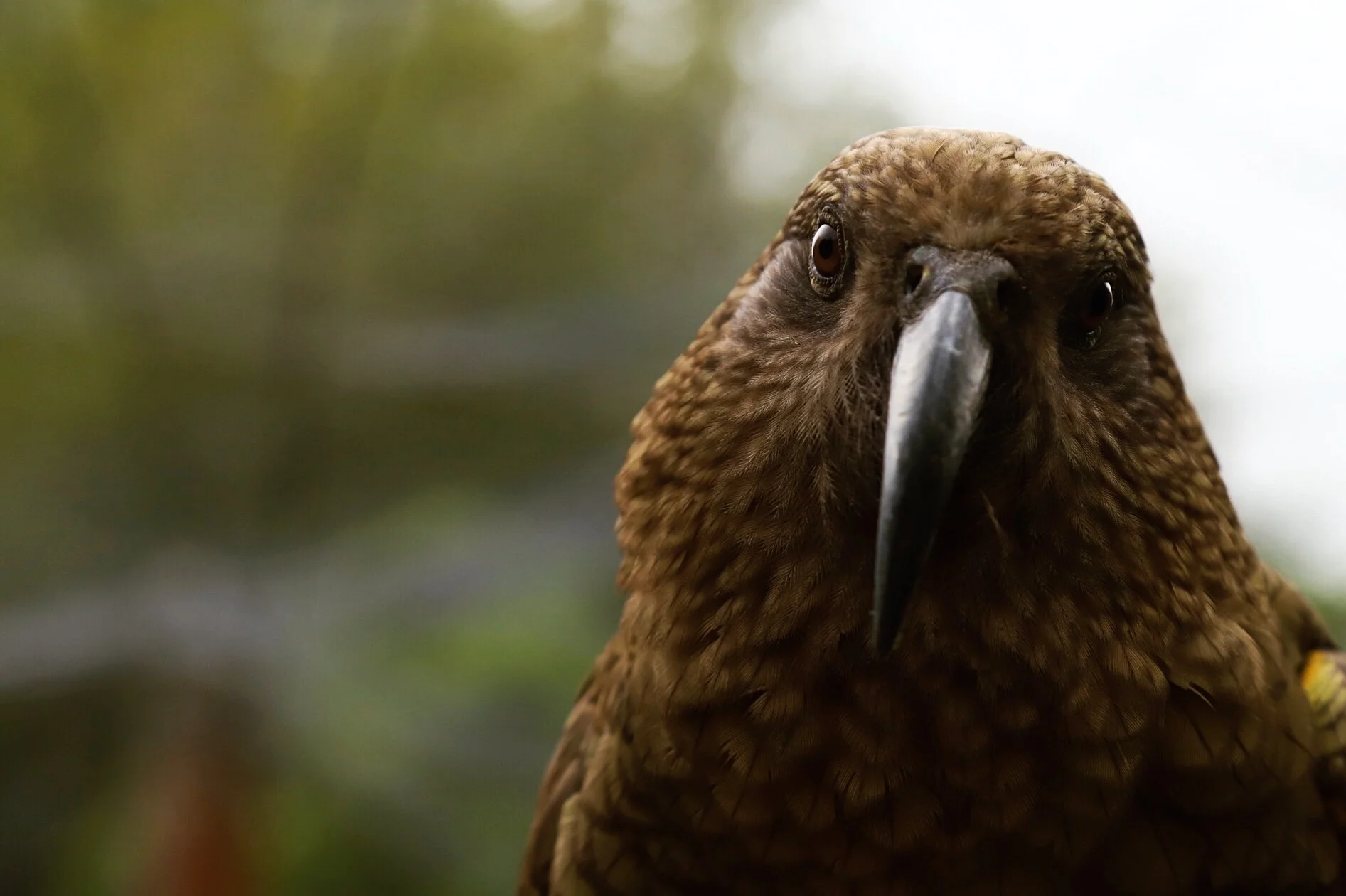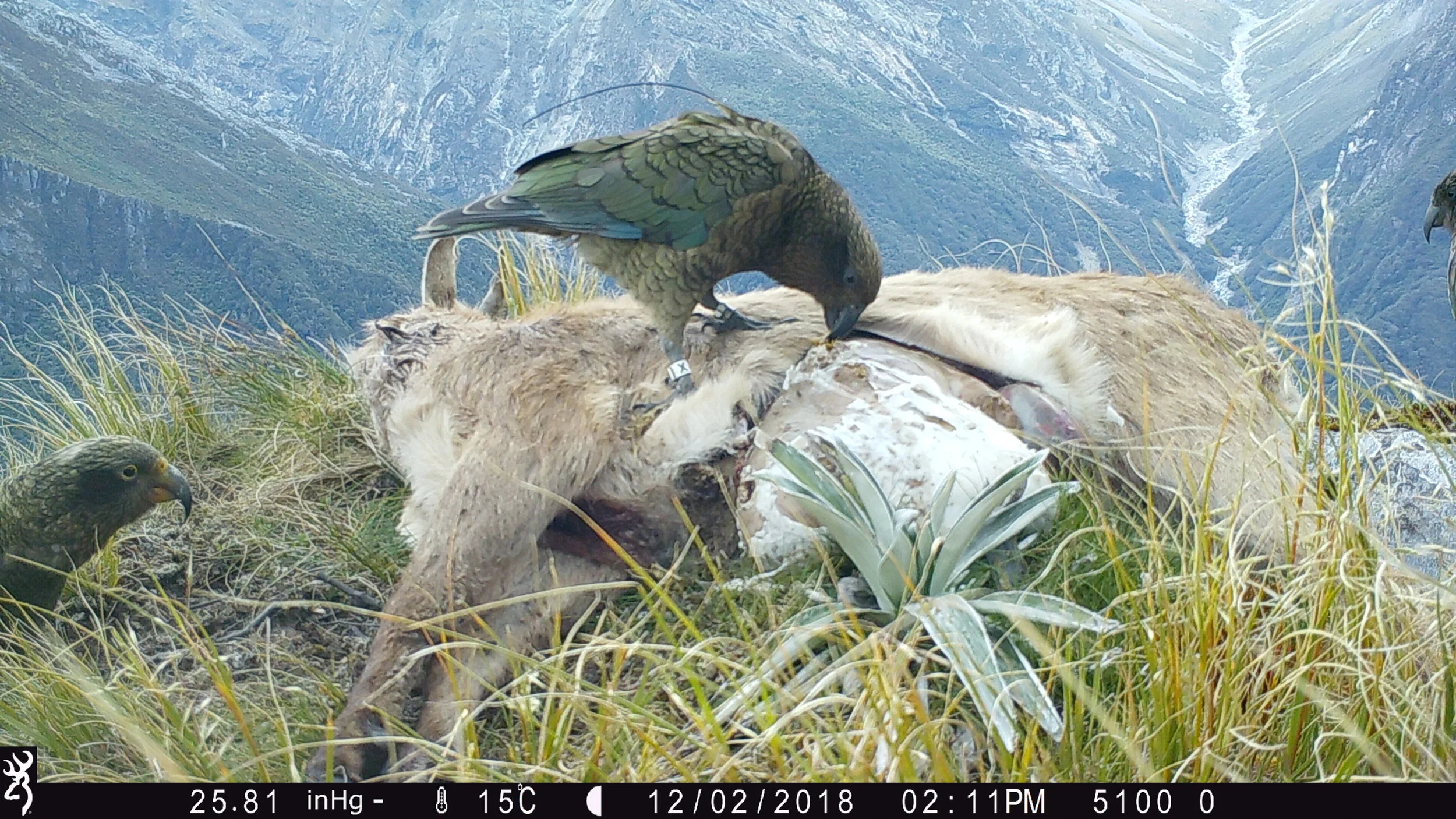Predator control using aerial 1080 is known to benefit kea at a population level. In one recently published study, kea nest survival at a monitored site increased from 46.4%, before the application of 1080, to 84.8% after the application of 1080 (Kemp et al. 2018).
However, some individual kea have died in some operations as a result of 1080 poisoning, and this is thought to be in part due to their inquisitive nature and willingness to investigate novel or unfamiliar objects.
Unlike humans, many species of birds, including parrots, are able to perceive colours within the ultraviolet spectrum. Through this trial we aimed to examine whether the ability to see in UV affects the way in which different types and colours of cereal baits appear to kea, which in turn may have an influence on how kea respond to them.
In particular, this trial sought to determine whether kea are able to detect a visual difference between green dyed baits and plain, undyed baits, and between those that contain anthraquinone (a secondary repellent) or pyranine bio-marker, and those that do not.
In late 2018 Zero Invasive Predators (ZIP) ran a series of behavioural trials with kea housed at Willowbank Wildlife Reserve, which found that cereal baits containing the repellent anthraquinone at a concentration of 2.7% by weight can significantly reduce consumption of cereal baits by kea during subsequent exposures. This trial was published on our website as both a Finding and more detailed Technical Report.
The promising results of these trials led us to begin developing a plan to use anthraquinone-laced cereal baits to reduce the potential risk to kea during our upcoming predator removal operation in the Perth River valley.
If any possums or rats in the operational area also develop an aversion to cereal baits, this would likely compromise the effectiveness of the predator removal operation. Therefore, the implementation plan for the operation may require methodology to expose kea to the repellent, but not the target predators.
Anthraquinone is known to reduce consumption of baits by rats, but little evidence exists to suggest whether or not this is also true of possums (Clapperton et al. 2015).
To inform the implementation of our kea risk mitigation plan, we ran some behavioural trials in January 2019 with captive possums at our Lincoln Predator Behaviour Facility, to determine whether exposing possums to anthraquinone-laced cereal baits can result in aversion to cereal baits.
Last year, Zero Invasive Predators Ltd (ZIP) began developing and testing two methods to mitigate potential risks to kea (Nestor notabilis) from a proposed aerial 1080 operation to remove predators from the Perth River valley, South Westland. The two methods are to:
apply non-toxic bait laced with bird repellent to deter kea from eating the toxic bait; and
provide fresh tahr carcasses as a more attractive, preferred, food source.
This Finding, and the accompanying Technical Report, outlines two trials we ran between June and November 2018, to (i) investigate whether kea activity is higher around tahr carcasses than at cereal bait (Phase 1), and (ii) refine the deployment of tahr carcasses as a technique to mitigate the potential risk to kea from the proposed 1080 to Zero operation (Phase 2).
The trials covered a broad range of topics, including the population demographics of kea seen at tahr carcasses and at bait, types of kea behavioural interactions seen with cereal bait, proportion of the banded population of kea visiting these sites, and average longevity of tahr carcasses as a food source for kea.
Last year, Zero Invasive Predators Ltd (ZIP) began developing and testing two methods to mitigate potential risks to kea (Nestor notabilis) from a proposed aerial 1080 operation to remove predators from the Perth River valley, South Westland. The two methods are to:
apply non-toxic bait laced with bird repellent to deter kea from eating the toxic bait; and
provide fresh tahr carcasses as a more attractive, preferred, food source.
This Finding, and the accompanying Technical Report outlines a trial we began in November 2018, in which we investigated whether a repellent, anthraquinone, could be used to ‘teach’ kea to avoid consuming cereal baits.
Zero Invasive Predators Ltd (ZIP), with the support of the Department of Conservation (DOC) and Predator Free 2050 Limited, is currently undertaking a programme of research and development work in the Perth River valley on the West Coast of the South Island.
The purpose of the work is to test and refine an approach to completely remove possums from large areas and prevent them from re-establishing, and to develop this approach for ship rats and stoats. We call the approach ‘Remove and Protect’. This is the first time such an attempt has been made on the New Zealand mainland. The results are expected to help enable New Zealand to achieve predator-free status by 2050.
One component of the approach is the use of aerial 1080 to completely remove possums, using a method we developed in consultation with experts from the Department of Conservation (DOC), OSPRI and Manaaki Whenua - Landcare Research. We call this method ‘1080 to Zero’.
The DOC permission for ZIP to undertake an aerial 1080 operation in the Perth River research area acknowledged the risk to kea, and included a requirement that ZIP undertake a project to estimate how likely kea would be to consume bait containing 1080. This requirement was intended to assist DOC to assess and decide whether the application of toxic bait should proceed.
While kea have previously been monitored through aerial 1080 operations, as far as we know, this project is the first time that anyone has attempted to learn about the consumption of non-toxic baits by kea prior to toxic bait being sown.
This Finding reports the results of the project. The work that is underway to measure and mitigate the risks to kea since this project was completed are described in a companion Update.






